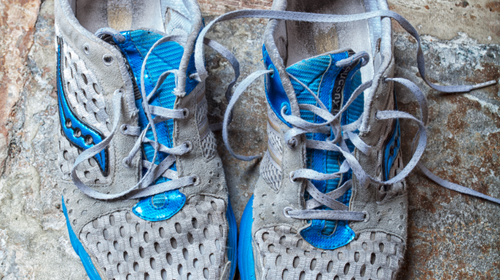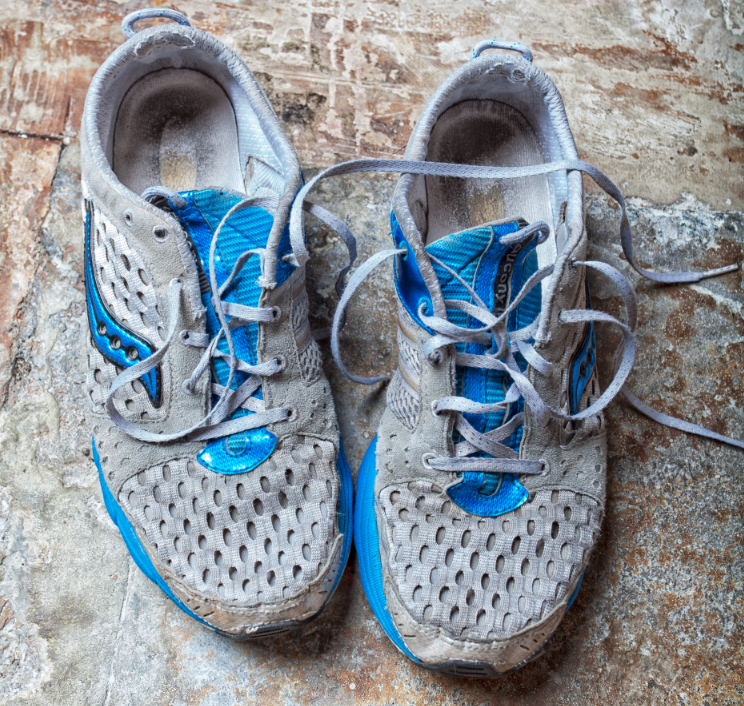Q. ��I’m going to start training for a spring marathon this winter and am just now starting to build up my base. How often should I replace my running shoes?
Joe
A.
Unfortunately, there’s no universal answer to this question, given that many factors figure into the lifespan of a shoe: the construction of the shoe, your physical makeup, the way in which you strike the surfaces you’re running on, and even the climate you live in.
That said, most running shoes will last between 300 and 500 miles, which is, admittedly, quite a range.
So how do you know if your shoes need replacing? Look for the obvious signs of wear and tear, and listen to your body.
Begin by considering the outsole, the rubber part of the shoe that comes in contact with the ground. Over time, the tread of the outsole starts to wear away, just as tires on a car eventually become bald, and you begin to lose grip on the ground below. This is the most obvious sign of wear and tear — but the outsole tells only part of the story.
What is harder to see is what happens inside the shoe when you run, in the midsole, where the cushioning and support are housed. Every time your foot comes in contact with the ground, you compress that midsole area. It responds by absorbing the blow and returning energy to you as you begin the next stride. This process is repeated thousands of times during a run.
As you can imagine, the midsole becomes fatigued over the course of a couple miles and then needs time to rebound in between runs to return to its original, bouncy state. After a few hundred miles, however, the midsole breaks down to the point of no return. You can’t see this, but you can sure feel it in a sensation of “flatness” or “deadness.” The shoe doesn’t have the bounce that it once did. Little aches and pains begin to arise. You’re not injured, but your body is talking to you. It’s telling you that your shoes need changing. You should listen.
Still not sure if you should swap out your shoes? Head to your local running store, and try on a fresh new pair of your favorite training shoes side by side with the ones you’ve been running in. Feel the difference? Often, it will be pretty clear. You’ll feel higher off the ground in the newer pair if the midsole of your current pair is compressed beyond the point of no return.
Remember, don’t go solely by how the outsole looks to determine whether or not a shoe needs to be replaced. If you do most of your running on a treadmill, a smooth road, or a groomed trail, the outsole of the shoe can look fine for a long time, but the internal damage is still taking place. Note in your training log when you start running in a new pair of shoes, and keep track of how many miles you run on them. Over the course of a 12- to 16-week training cycle, you can expect to go through between two and four pairs of shoes. When you start approaching the end of the shoes’ life, it’s a good idea to start breaking in a fresh pair as you phase out the broken-down model. Your body will thank you for it.


